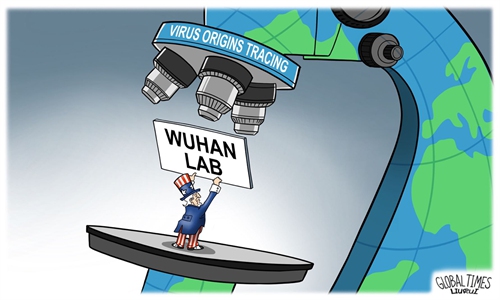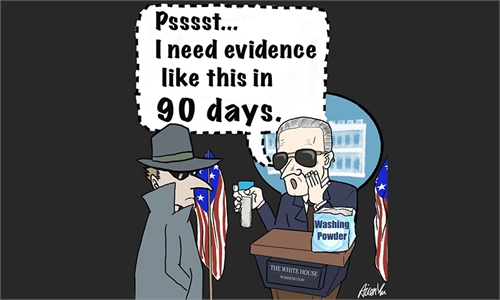IN-DEPTH / IN-DEPTH
Coronavirus modifications, undisclosed virus incidents details, close contact with Fort Detrick: Six doubts surround US' UNC labs
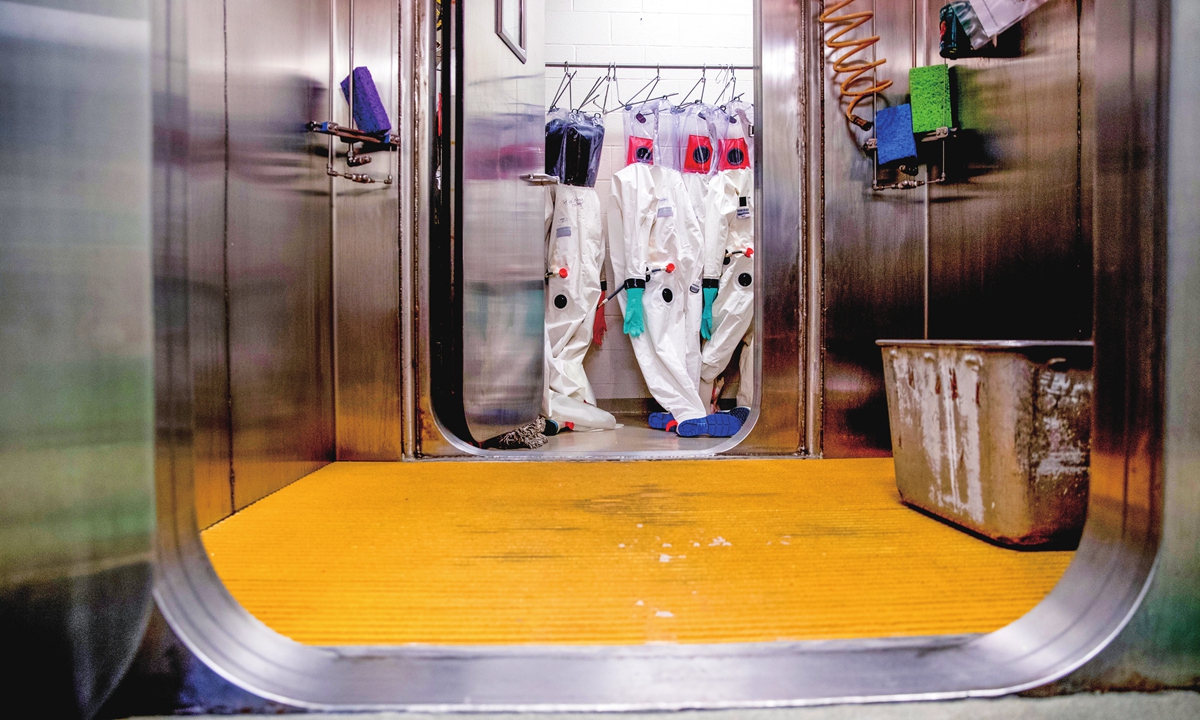
Biosafety protective suits for handling viral diseases are hung up outside a chemical decontamination room in a biosafety level 4 training facility at Fort Detrick Photo: AP
The COVID-19 pandemic prevention and control situation remains grim across the world. As the virus continues rapidly mutating and the new variants spread much more readily, many countries have witnessed COVID-19 cases rebound. At this critical moment, the international community should unite together to fight the pandemic. However, the US government continues to engage in political manipulation and hype rumors including the so-called "Wuhan laboratory leak theory," casting a heavy cloud over possible international cooperation against the pandemic.
But according to the disclosed information, it's the lab at the University of North Carolina (UNC) and Ralph Baric, in charge of the UNC lab at Chapel Hill, that remain surrounded with questions and mysteries. It is these two entities that owe the world an explanation when it comes to the "lab leak" theory.
The Global Times lists six suspicions of mysteries behind the Fort Detrick lab and the "Coronavirus Hunter" to propose potential investigation directions for virus origins.
Suspicion 1: How are 'Coronavirus Hunter' and lab studies linked?
Ralph Baric, an American scientist who is called "Coronavirus Hunter," has long been well known for his technique of "reverse genetics" in terms of the coronavirus, used to "mix and match parts of multiple viruses."
Baric pioneered the study of SARS, MERS, and the novel coronavirus in the US. The UNC lab where Baric works has long been modifying the genes of various coronaviruses and creating new strains to explore their possible harm to humans.
His core research covers rearranging the coronavirus gene order to study genome evolution and function in the coronavirus disease transcription and replication.
The media reported that Baric started the study of synthetic reconstruction of the coronavirus disease in 1990s, before the advent of gene sequencing machines and gene editing technologies.
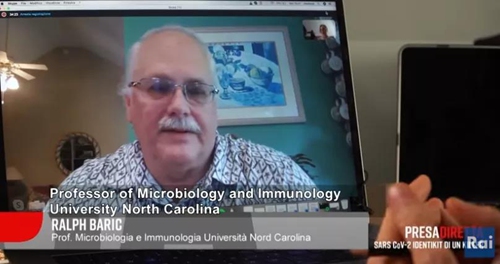
Ralph Baric takes interview with Italian media in September, 2020. Photo: Screenshot on Huffington Post
In 2003, when the SARS broke out in China, researchers at UNC and the Vanderbilt University Medical Center synthetically recreated the bat variant of the SARS coronavirus (CoV) strain. Baric, one of the leaders on the project, said that synthetic reconstruction of the virus allows them to "test the pathways in which the virus emerges and understand the ways that animal coronaviruses move from one species to another."
On December 9, 2019, a few weeks before the COVID-19 outbreak in Wuhan, Peter Daszak, president of EcoHealth Alliance, an alleged global nonprofit organization "dedicated to protecting wildlife and public health from the emergence of disease," admitted in an interview on the TV show This Week in Virology that the EcoHealth Alliance had long been working with Baric and UNC to develop a SARS vaccine by using some genetic techniques in the laboratory. After studying more than 100 SARS-related coronaviruses, they found that some of the viruses could enter human cells and some could cause SARS-like symptoms that could not be cured and for which vaccines were ineffective.
Suspicion 2: Coronavirus disease modification experiments at the UNC
At an academic conference in 2013, Baric learned that the team of Shi Zhengli, a scientist at the Wuhan Institute of Virology in Central China's Hubei Province, had detected the genome of novel coronavirus SHC014 in wild bats, so Baric made contact and obtained the genetic sequencing information of the virus from Shi, which was then modified at his biological laboratory at UNC to insert the specific SHC014 gene into the SARS virus, creating a brand new coronavirus which has a strong replication capacity in human lung cells according to the MIT Technology Review.
This research result was published in the Nature Medicine journal in 2015, where Shi Zhengli was also listed as co-corresponding author, which has been regarded by some people as the proof for the claim that the "novel coronavirus was produced by the Wuhan Institute of Virology." But the virus modification and mouse infection experiments for this study were in fact all conducted at UNC, and the new chimeric viruses created were never provided to Shi's team.
In May, Dr. Anthony Fauci, director of the US National Institute of Allergy and Infectious Diseases (NIAID), part of the US government's National Institutes of Health (NIH), stated that the NIH "has not ever and does not now fund gain-of-function research in the Wuhan Institute of Virology," BBC reported.
Suspicion 3: The paradox of modified virus
Although many scientists around the world have said that artificially modified viruses may leave traces and are different from viruses that have evolved in nature, Baric said in an interview with an Italian media outlet in September 2020 that "it is possible to engineer a virus without leaving a trace."
In the interview, Baric attacked the WIV. He said that "the answers you are looking for, however, can only be found in the archives of the Wuhan laboratory."
While trying to prove his own innocence, Baric, however, insists that COVID-19 cannot be artificially modified.
In an email to other experts in March 2020, Baric stated "No, there is absolutely no evidence that this virus is bioengineered."
In May 2021, in a statement to The Fact Checker of The Washington Post, Baric denied to having "introduced mutations into the SHC014 [horseshoe bat coronavirus] spike to enhance growth in human cells," and none of the bat SARS-like viruses studied at UNC were related to SARS-CoV-2, the cause of the COVID-19 pandemic.
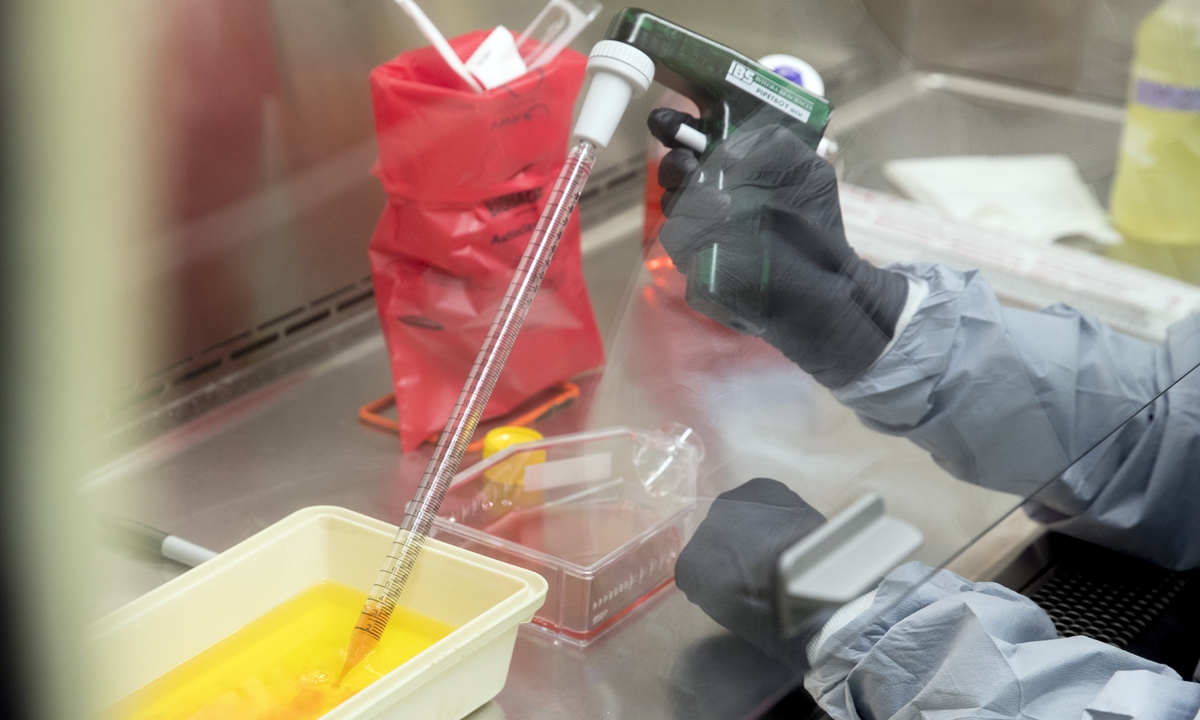
A laboratory scientist cultures coronavirus to prepare for testing at Fort Detrick. Photo: AP
Suspicion 4: UNC labs had frequent accidents but declined to disclose key details
The labs at UNC reported 28 lab incidents involving genetically engineered organisms to officials at the US National Institutes of Health (NIH) from January 2016 to June 2020, according to ProPublica, a nonprofit news website based in New York City.
Six of the incidents involved "various types of lab-created coronaviruses" including SARS, MERS, and COVID-19, according to an article published by ProPublica in August 2020. "Many were engineered to allow the study of the virus in mice," it added.
Among the six incidents, only one researcher, who was bitten by a mouse infected with the SARS-CoV-2 virus strain, undertook 14 days of self-isolation at home in April 2020. Workers involved in other incidents were only asked to conduct daily monitoring for any respiratory symptoms or fever, or instructed to "wear a surgical mask while in public and at work."
UNC declined to answer questions about the six coronavirus-related incidents nor did they disclose key details about them to the public, like the names of viruses involved, the modifications made to them, and what risks posed to the public, which, as ProPublica reported, was "contrary to NIH guidelines."
Neither UNC nor the NIH has released detailed investigation reports on the incidents, nor have they explained why they didn't quarantine most of the lab researchers who might have been exposed to the viruses in the incidents.
The university also deleted key information from "incident reports it released in response to a public records request," ProPublica said in an August 2020 article, thus making the public unable to assess the risks of the incidents.
Suspicion 5: Unusual relationship with suspicious Fort Detrick
The Global Times found that Baric has close ties with the US Army Medical Research Institute of Infectious Diseases (USAMRIID), as well as the Integrated Research Facility at Fort Detrick (IRF-Frederick), a research facility of the National Institute of Allergy and Infectious Diseases within the National Institutes of Health, both of which have long been engaged in research involving high-risk viruses.
Numerous scientific papers show that Baric has conducted many studies involving coronaviruses with USAMRIID. For example, a 2006 paper titled Cynomolgus Macaque as an Animal Model for Severe Acute Respiratory Syndrome showed that they had scientific collaboration on SARS. Other academic papers from 2015 and 2017 also indicated that Baric had a research partnership with USAMRIID.
At the same times, the Global Times learned that both IRF-Frederick and USAMRIID have spotty laboratory safety records.
According to the Frederick News-Post, for example, while claiming to have a high-security biological laboratory, IRF-Frederick has seen multiple lab safety incidents and some directly involving deadly viruses like anthrax among others. The WKYC Studio, a local media affiliate of NBC News, also reported in July 2016 that IRF-Frederick once had a safety incident involving the Ebola virus at the lab in 2015.
In the fall of 2019, USAMRIID's research was temporarily shut down after Centers for Disease Control and Prevention (CDC) inspection. The CDC, in its inspection findings, noted six departures from the federal regulations for handling select agents and toxins, according to the Frederick News-Post.
Suspicion 6: The US government has funded the gain-of-function research secretly for a long time
The gain-of-function research carried out by Baric, which aims at enhancing the pathogenicity or transmissibility of a virus through gene editing, is highly controversial among the scientific and research community.
In October 2014, the NIH announced a funding pause on gain-of-function experiments involving influenza, SARS, and MERS viruses.
But according to an investigation carried out by individual media, the ban has never been implemented as there was an exception that allows the head of the funding agency to apply for an exemption if he or she believes the research is necessary to protect public health or national security.
In 2017, the US government lifted its limitation on funding of gain-of-function research.
Baric once received more than $6 million from the National Institute of Allergy and Infectious Diseases (NIAID) in 2017 to accelerate the development of a drug to treat the deadly coronavirus disease, according UNC's website. The drug meant to reverse COVID-19 disease in humans is currently in clinical trials.
According to emails released under the US Freedom of Information Act, EcoHealth Alliance, an investigative nonprofit research group, made an undisclosed payment to Baric in January 2018.
The research group Independent Science News revealed that EcoHealth Alliance has long received funding from the US Department of Defense and USAID to support research on the coronavirus disease and the epidemic prevention and control, and of the more than $103 million in funding, nearly $40 million from the Pentagon was intentionally concealed.
What are the UNC lab and Baric's team hiding? What's the horrific truth that is yet to be uncovered? While the US is trying so hard to instigate the WHO to reinvestigate the Wuhan Institute of Virology, it has remained silent on the UNC lab and Fort Detrick lab and avoided answering questions about them from the international community. The US needs to give a reasonable and convincing explanation for its illogical behaviors. China has twice invited the WHO to China to conduct research on COVID-19 virus origins. From the perspective of science and fairness, since tracing the origins is necessary, shouldn?t the US invite the WHO and the international scientific community to conduct an open, transparent and thorough investigation in the US?
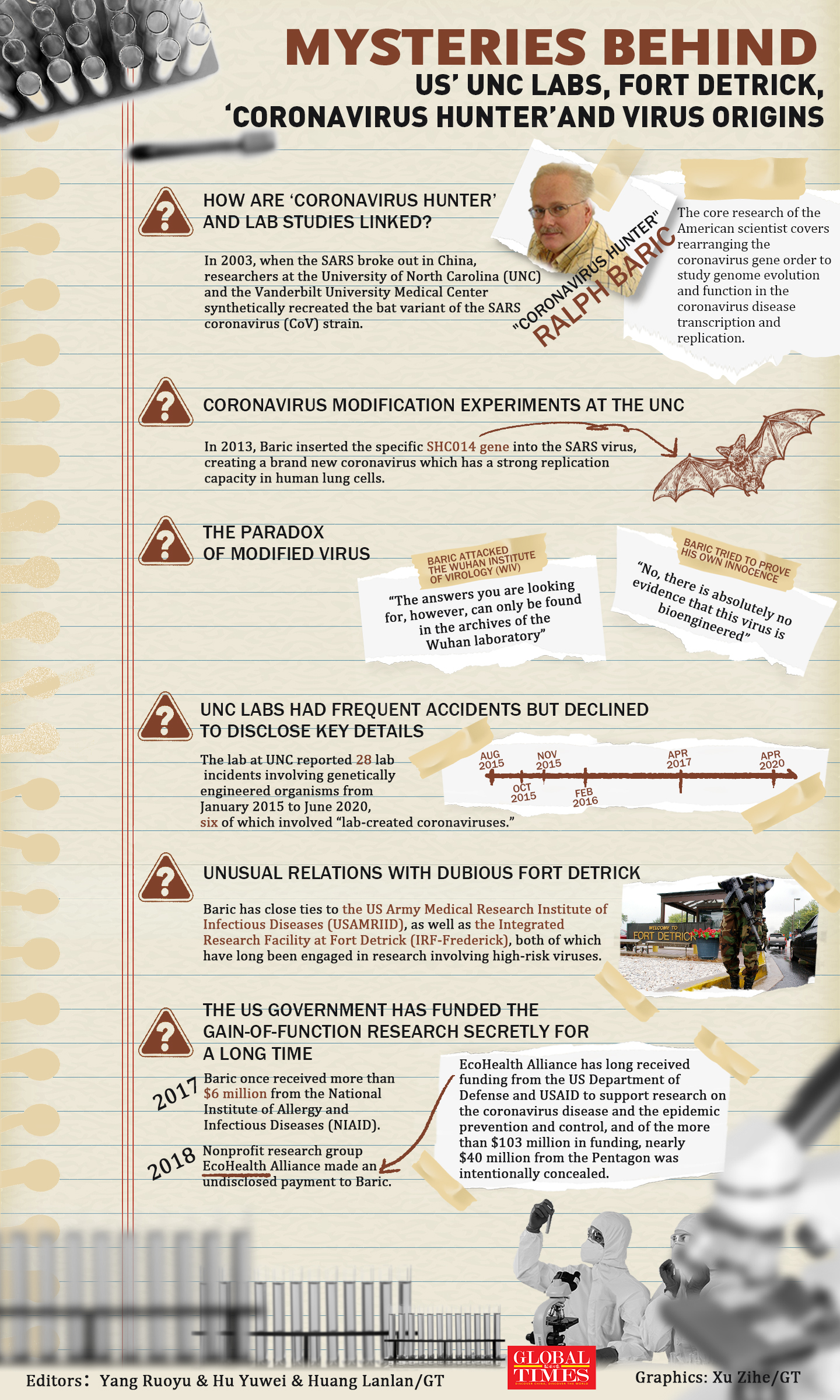
Mysteries behind US' UNC labs, Fort Detrick, 'Coronavirus Hunter' and virus origins. Graphic: Xu Zihe/GT

